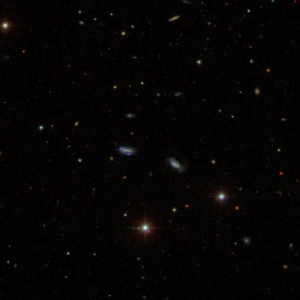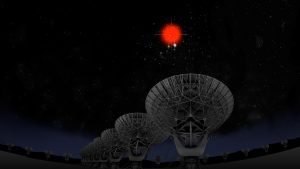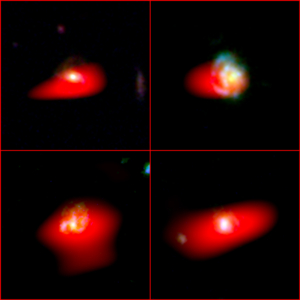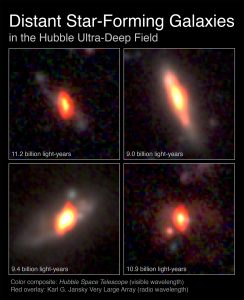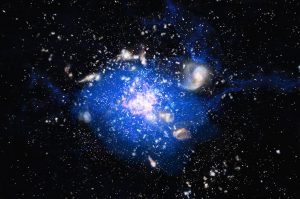Seven dwarf galaxy groups poised to merge into larger galaxies.
Precise Location, Distance Provide Breakthrough in Study of Fast Radio Bursts
For the first time, astronomers have pinpointed the location in the sky of a Fast Radio Burst, allowing them to determine the distance and home galaxy of one of these mysterious pulses of radio waves.
Milky-Way-Like Galaxies Seen in their Awkward Adolescent Years
ALMA sees progenitors of Milky-Way-Like Galaxies
VLA, ALMA Team Up to Give First Look at Birthplaces of Most Current Stars
Astronomers have gotten their first look at exactly where most of today’s stars were born.
Embryonic Cluster Galaxy Immersed in Giant Cloud of Cold Gas
Astronomers studying a cluster of still-forming protogalaxies seen as they were more than 10 billion years ago have found that a giant galaxy in the center of the cluster is forming from a surprisingly-dense soup of molecular gas.
Tsunami of Stars and Gas Produces Dazzling Eye-shaped Feature in Galaxy
Glancing collision produces galactic “eyelids.”






